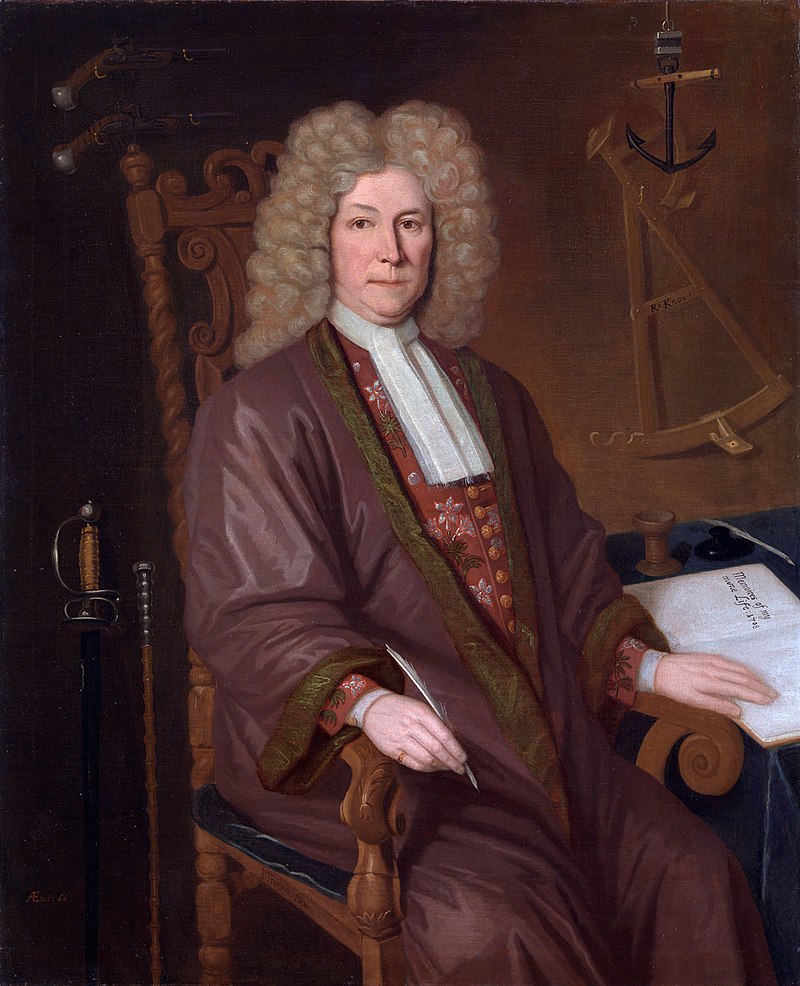Where did Robinson Crusoe come from? How did Defoe—who held a number of interesting professions, including a trader, writer, and spy—harness the elements of the story and mold them into this classic English novel? Theories abound on the origins of the novel and the source material Defoe had
at his disposal. Even today, nearly 300 years after its initial
publication, academics and scholars still quibble over the search for
the real Robinson Crusoe and the story behind the story.
Theory #1: Alexander Selkirk
A
Scottish sailor and notorious hothead, Alexander Selkirk’s story was
long-held to be the inspiration for Defoe’s Crusoe. Selkirk worked as a
naval officer aboard the Cinque Ports under Captain Thomas Stradling. In September 1704 after expressing doubts about the ship's
seaworthiness, Selkirk was marooned on the Juan Fernandez Islands off
the coast of Chile. Selkirk lived on the desert island before being
rescued in 1709 and receiving a hero’s welcome upon his return home.
Word of his story spread throughout Europe, particularly in England,
Defoe’s home turf.
Some scholars argue the timeline of Selkirk’s story would not allow it to be the inspiration for Robinson Crusoe,
which was published in 1719 and completed a good amount of time prior.
But others argue Selkirk’s exploits had a direct impact on Crusoe and choices Defoe made in composing the story.
 |
| Selkirk reading his Bible in one of two huts that he built on a mountainside |
 |
| The rescued Selkirk, seated at right, being taken aboard Duke. |
Theory #2: Ibn Tufail’s Hayy ibn Yaqdhan
A tongue-twister though it may be, Hayy ibn Yaqdhan was a
12th Century philosophical novel by Ibn Tufail, an Arabic writer,
philosopher, physician, and court official. Loosely translated as Philosophus Autodidactus,
the novel explores the themes and ideas of a feral child raised by
animals on a desert island. Initially conceived as something of a
thought-experiment, the novel is concerned with what happens to human
beings in the absence of other human beings, and how curiosity and the
pursuit of answers and truth are innate human qualities.
As with the Selkirk theory, some scholars argue the central conceit of Tufail’s text was an important influence on Defoe’s novel, while others contend it’s the themes and ideas of Tufail’s work that Defoe took as a source of inspiration.
As with the Selkirk theory, some scholars argue the central conceit of Tufail’s text was an important influence on Defoe’s novel, while others contend it’s the themes and ideas of Tufail’s work that Defoe took as a source of inspiration.
Theory #3: Robert Knox
Its direct influence on Crusoe notwithstanding,
the story of English sea captain Robert Knox and his nearly two
decades-long tenure on an island near what is today Sri Lanka is one of
the most compelling true-life action-adventures stories ever. Knox set
sail for Persia on behalf of the British East India Company in January
1658, but his ship was severely damaged during a storm about one year
later, and he and his crew were taken captive and held for 19 years by
the inhabitants of the Island of Ceylon. Though held in relatively
livable conditions—Knox and his crew were given jobs and responsibilities in the village in exchange for lodging, food, and other provisions—Knox finally escaped and fled to a nearby island controlled by the Dutch before being returned home to England.

Accounts of his time on Ceylon were published in a 1681 book called An Historical Relation of the Island Ceylon, (link to the book provided, thanks to archive.org) a text that featured detailed illustrations and descriptions of the island and its inhabitants and which served as the only recorded information about the island during that age. Until recently, the story of Knox, his captivity, and eventual escape was thought to be the most direct influence on the story of Crusoe.

Accounts of his time on Ceylon were published in a 1681 book called An Historical Relation of the Island Ceylon, (link to the book provided, thanks to archive.org) a text that featured detailed illustrations and descriptions of the island and its inhabitants and which served as the only recorded information about the island during that age. Until recently, the story of Knox, his captivity, and eventual escape was thought to be the most direct influence on the story of Crusoe.
Theory #4: Henry Pitman
Stemming from intensive research and investigation as detailed in the 2002 Tim Severin book Seeking Robinson Crusoe, a growing number of literary scholars and historians now believe Defoe’s Robinson Crusoe
was written in response to the story of Henry Pitman, a former surgeon
to the Duke of Monmouth, who was stranded on a desert island in the
Caribbean following a shipwreck. Upon his escape from the island and
return home, Pitman’s story was published by English publisher J. Taylor
of Paternoster Street—Taylor’s son would later publish Defoe’s masterwork, Robinson Crusoe.
In addition, Severin’s research uncovered Pitman lived in an apartment above Taylor’s publishing house, which Severin argues is fertile ground for a meeting between Pitman and Defoe. While word of Pitman’s exploits did circulate through England, Severin contends several face-to-face meetings between Pitman and Defoe may have taken place in which Pitman may have recounted his story to Defoe, who then interwove bits and pieces of Pitman’s experience into his own narrative.
In addition, Severin’s research uncovered Pitman lived in an apartment above Taylor’s publishing house, which Severin argues is fertile ground for a meeting between Pitman and Defoe. While word of Pitman’s exploits did circulate through England, Severin contends several face-to-face meetings between Pitman and Defoe may have taken place in which Pitman may have recounted his story to Defoe, who then interwove bits and pieces of Pitman’s experience into his own narrative.
No comments:
Post a Comment